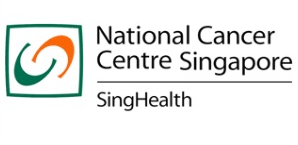In a new study recently published in the Annals of Internal Medicine, researchers at NYU Langone Medical Center concluded that overuse of cardiac stress testing with imaging has led to rising healthcare costs and unnecessary radiation exposure to patients.
In what is believed to be the first comprehensive examination of trends in cardiac stress testing utilizing imaging, researchers also showed that there are no significant racial or ethnic health disparities in its use. They also made national estimates of the cost of unnecessary cardiac stress testing with imaging and the health burden of this testing, in terms of cancer risk due to radiation exposure.
Cardiac stress testing, particularly with imaging, has been the focus of debate about rising health care costs, inappropriate use, and patient safety in the context of radiation exposure. Joseph Ladapo, MD, PhD, assistant professor in the Departments of Medicine and Population Health at NYU Langone, and the lead author of the study, and colleagues wanted to determine whether U.S. trends in cardiac stress testing with imaging may be attributable to population shifts in demographics, risk factors, and provider characteristics, and to evaluate whether racial/ethnic disparities exist in physician decision making.
They designed their study utilizing data from the National Ambulatory Medical Care Survey (NAMCS) and National Hospital Ambulatory Medical Care Survey (NHAMCS) from 1993 to 2010. Patients chosen for the study were adults without coronary heart disease who were referred for cardiac stress tests.
Between 1993 to 1995 and 2008 to 2010, the annual number of ambulatory visits in the U.S. in which a cardiac stresstest was ordered or performed increased by more than 50%. Cardiac stress tests with imaging comprised a growing portion of all of these tests – increasing from 59% in 1993 to 1995 to 87% in 2008 to 2010. At least 34.6% – or one million tests – were probably inappropriate, the researchers concluded, with associated annual costs and harms of $501 million and 491 future cases of cancer.
The authors also concluded that there was no evidence of a lower likelihood of black patients receiving a cardiac stresstest with imaging (odds ratio, 0.91 [95% CI, 0.69 to 1.21]) than their white counterparts – although some modest evidence of disparity in Hispanic patients was found (odds ratio, 0.75 [CI, 0.55 to 1.02]).
The investigators concluded that the national growth in cardiac stress testing can be attributed largely to population and provider characteristics – but the use of imaging cannot. Physician decision making about cardiac stress testing also does not result in racial/ethnic disparities in cardiovascular disease.
“Cardiac stress testing is an important clinical tool,” says Dr. Ladapo, “but we are over using imaging for reasons unrelated to clinical need. This is causing preventable harm and increasing healthcare costs.
“Reducing unnecessary testing also will concomitantly reduce the incidence of radiation related cancer,” he adds. “We estimate that about 500 people get cancer each year in the US from radiation received during a cardiac stress test when, in fact, they most probably didn’t need any radiological imaging in the first place. While this number might seem relatively small, we must remember that ‘first, do no harm’ is one of the guiding principles in medicine.”
So what can be done to reduce unnecessary cardiac stress testing with imaging? “More efforts, such as clinical decision support, are needed to reduce unnecessary cardiac stress testing,” Dr. Ladapo concludes, suggesting greater use ofstress testing without radiological imaging, such as regular exercise treadmill tests or stress testing with ultrasoundimaging as opposed to CT imaging.
As to the reason why certain racial and ethnic minorities have poorer rates of treatment for cardiovascular disease and generally have poorer cardiovascular health outcomes compared to white patients, Dr. Ladapo concludes that no one has really explored whether there could be disparities in cardiac stress testing, which is a mainstay of diagnosing patients with heart disease in this country. “If we know that one minority group has a higher incidence of poorer outcomes from heart disease, perhaps we need to examine if they would benefit from more appropriate use of cardiac stress testing,” he offers. “Perhaps one contributing reason they have poorer outcomes is because we are not testing them appropriately.”
http://www.medicalnewstoday.com/releases/283694.php



